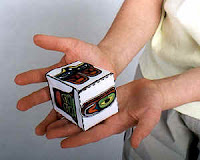Objectives
- Present a view of Native history that acknowledges its validity independent of Western ideals
- Provide examples of Native history-keeping that elevate oral tradition from charming lore to authentic record
Goals
- To transform the image of the intellectual capabilities of Alaska Natives and American Indians as it is currently communicated in popular culture and education
- To renovate the methodology of persons responsible for communicating those images
http://www.history-map.com/picture/000/fields-Alaska-gold-The.htm
Rationale
In many ways, Alaska, with its recent history, is still a model of colonialism. Among the consequences of that circumstance is the abysmal dropout rate for Alaska Native children from the education system in its current manifestation, which leads to predictable effects inflicted upon the recently colonized Native people of the region: poverty, violence, infirmity. Given that government-defined Indian Education was built with the purpose of assimilation, teachers today must ask themselves two critical questions:
Is what I teach done for the purpose of edifying or assimilating my student?
What can I learn from my students?
Discussion
Almost every source describes the long record of Native use and occupation that took place before European contact as “pre-history.” Indigenous groups, however, possess a history of thousands of years of occupancy and exodus, relocation and settlement, exploration and discovery, embedded throughout the generations in legal process, artistic declarations, symbolic regalia, and oral tradition at least as accurately and in many cases more accurately than the European system of writing that was used for many years after contact to remove rights and appropriate lands. We must always remember that before contact, Native cultures possessed vigorous legal systems, effective educational systems, efficient health systems, elaborate social orders, sophisticated kinship systems, complex languages, profitable trade systems—every social institution needed for a culture to flourish for thousands of years.
Because of the eradication of those systems and institutions, we are left with written records that begin in 1741. However, it behooves us to try to learn about the original people of what is now Alaska from a less Euro-centric perspective.
Before this:
Was this:
http://www.akhistorycourse.org/articles/article.php?artID=149
Art or Craft?
The photograph above, available at http://vilda.alaska.edu, demonstrates the richness of Northwest Coast Art forms and the variety of materials used and upon which designs were traditionally inscribed. Bentwood boxes, Chilkat blankets, masks, house posts, and screens are well-known examples of Northwest Coast art, but the most widely known manifestation of Northwest coast art is the totem pole. Totem poles are exhibited worldwide, and examples of the form are held in museums in many countries.
Teacher’s Tip:
Let's not make the mistake of having children “craft” a totem pole or other object with cultural meaning until we fully understand its significance.
Compare:


http://www.nps.gov/history/museum/treasures/html/T/sitk5231.htm http://www.dltk-kids.com/canada/mtotem.html
Compare:
Food for thought: Did Native people have “education” before colonization?
Cultural exchange is a characteristic that typifies all human cultures. Trade is not limited to material goods, but also includes such things as language and song. The exchange of new words, entertainment, fashion, recipes—everything tangible and intangible—contributes to the development, change, and progress of every culture and has done so throughout human history. In our part of the world, coastal people were historically known as efficient and profitable traders, taking advantage of the proximity of the ocean and its riches to trade with inland peoples. With regard to the Native cultures of Alaska and beyond, how did children learn to be master traders? How did children learn to be master carvers, weavers, or seafarers?
How did children learn about the history of their clan and that of others and about the social responsibilities expected of them?
History or Myth?
Oral tradition performs essential functions in all societies and in all cultures. Until very recently, most literary works originated as oral works. It’s just been since mass production of books that stories can be told on the page to great numbers of people. Common sense tells us that the bible, fairy tales, first-person accounts, ballads—most human knowledge—was preserved almost exclusively by oral tradition until books became commonly available.
Visit "Oral Traditions" at Teacher's Domain:
Absolute fidelity to the written word carries with it a predictable distrust of the spoken word. Add to this the European-based system of conferring legality upon written documents, and the stage is conveniently set for the disregard of the history, art, and beliefs of cultures that are based on oral tradition—especially when they occupy coveted land.
Let’s take a moment to note the important difference between the passing on of knowledge—conventions, history, beliefs, worldview, traditions, convictions, truths—and storytelling as it has come to be understood from an alphabet-based perspective that privileges the written word and undervalues the spoken word.
Visit "The Raven's Story" at Teacher's Domain:
We acknowledge that Native cultures and social systems were sophisticated and complex before European contact and remain so today. In the same way, we acknowledge that oral tradition is far richer and more complex than a glance through the modern lens allows us to recognize.
We do well to remind ourselves that the widespread bias for the written word is a product—and in fact a function—of modern Western-European power. History that has been kept by oral tradition has been shown in many cases to be reliable and more accurate than the written histories associated with certain events.
Food for thought: A history lesson
We’re familiar with the Chookaneidi history of how a glacier’s rapid advance forced the people of a village to flee from the area that is now Glacier Bay. That clan history, handed down from generation to generation by oral tradition, tells the story of what is now called the Little Ice Age, conservatively dated at several hundred years.
Here’s an example of two accounts of the same historical event—the meeting between the Tlingit and La Pérouse in what is now termed the 1700’s:
The Tlingit oral history version:
The Explorer's written version:
These websites provide models for lessons that can be adapted to an Alaska classroom. Let’s remember our two important questions
Is what I teach done for the purpose of edifying or assimilating my student?
What can I learn from my students?
Gunalcheesh!
Note: Here are some resources for those who wish to "dig deeper." Many of them you're already familiar with, but one or two may be new. Thanks again!
Scroll down for elders’ stories:
More information about the Yupiaq world view, relation with nature, and consequences of adaptation:
Examples of Native Leadership:
Example of Yupik traditional story by Elise Mather and Phyllis Morrow:
Scroll down for Section IV Frank Hill’s article “Passing on Traditional Knowledge”:
Again, thanks to everyone. It's been a real learning experience for me, and I appreciate everyone's generous sharing of knowledge. A final gunalcheesh.





























